Infrared heating is a wonderful alternative to conventional heating. It is comfortable, efficient, clean, easy to use, and safe. I own two infrared heating panels and love them for the feel of indoor sunshine they provide.
Since there are many pros and cons of infrared heaters, let’s start with a quick summary.
Pros
- High efficiency saves energy
- Natural healthy heating is great for our skin
- Widely applicable (indoor, outdoor, bathroom, etc.)
- Very durable heaters
- Not affected by draft. So you can ventilate without heat loss
- Does not reduce air quality since it doesn’t cause airflow
- Infrared heating is beneficial for allergy sufferers
- They are safer and healthier since they do not burn any fuel
- Infrared heating does not dry the air
- Infrared heating prevents condensation
- The heat is felt almost instantly
- Easy to install
- Infrared panels require no maintenance whatsoever
Cons
- Electric heating is expensive
- Focused heating does not heat the entire room
- Gas-fired infrared heaters are not entirely safe
- The air remains relatively cold
- Infrared heaters must not be obstructed by objects
- Not drying the air can be a disadvantage

(Image credit:Arno Reijnen from www.infrarood-warmtepanelen.nl)
The many pros of infrared heating
1. Infrared heating is highly efficient
Infrared heaters are exceptionally efficient heaters. They convert about 90% of their energy use into infrared and 10% into warm air, making them 100% efficient in producing heat. Infrared radiation directly heats people and objects and does not heat the air. This leads to a much quicker energy transfer between the heater and yourself or the objects you want to heat. Therefore, they use 30 to 40% less energy than other types of heating.
Normal, convection-based, heating warms up the air, which rises to the ceiling where it is mostly useless. Therefore, with conventional heaters, the whole room needs to be heated before you can feel the warmth. On top of that, a draft can easily lead to severe energy losses.
Infrared heaters immediately heat people (and objects) when they are in sight of the infrared rays, making them very effective heaters. This works similarly to heating from the sun as you feel the warmth of the sun’s (infrared) rays immediately when you get out of the shade.
I wrote an article on the efficiency of infrared heating compared to other forms of heating. It includes a table showing the energy use of infrared compared to regular space heating. You can find it here.
I wrote an in-depth article about the energy use of infrared heaters including the required wattage per room type and room size. You can find it here: Infrared heaters energy use (costs, efficiency, W/sq. ft.).
2. Infrared is natural healthy heat
Infrared heaters produce the same heat as heat from the sun. Therefore, it is the most natural and healthy form of heating for our body, skin, and muscles. With infrared heaters, you effectively create indoor sunshine without the potentially harmful components of sunlight, such as UV light. Therefore, you cannot get sunburnt by an infrared heater (but you also won’t get a tan).
All warm objects radiate out their heat in the form of (far) infrared. That includes the sun, you, and me!
Some studies have shown that daily exposure to infrared has a beneficial effect on human skin, reducing wrinkles and improving skin texture. Researchers found that infrared heat improved skin tightness and increased the collagen and elastin content of the skin. These skin proteins make the skin more youthful and stronger. (source1, source2)
I wrote an article on all the health benefits of heating with infrared. It goes into detail about skin health, indoor air quality, and safety. You can find it here.
Infrared heating is excellent for pets as well. For more information, see my article about pets and infrared here.
3. Infrared heaters can be applied anywhere, even outdoors
Most infrared heaters are designed for indoor space heating. They are available as sleek infrared panels or as portable heaters. Some infrared heaters such as patio heaters provide very intense infrared and are suitable for outdoor use.
Portable infrared heaters can be used similarly to regular portable heaters. They can easily be moved around to your desired spot and are effective at heating relatively small areas such as a children’s room.
For outdoor use, patio and terrace heaters are available. These are a type of heaters you may know from a cafe’s terrace during the winter.
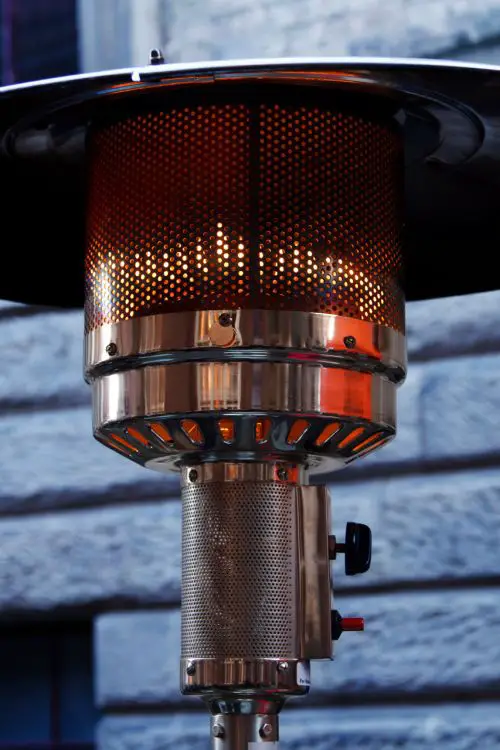
Next to portable and outdoor infrared heaters, infrared heaters are available as wall or ceiling-mounted panels.
Infrared heating panel applications
Infrared panels are usable anywhere indoors. They are most effective when hanging from the ceiling. This way, their warming rays will not get blocked by any objects.
A wonderful option for infrared heating panels is they are available with art. As you can see in the pictures below, you can have the manufacturer print an image of your choice on the panel.


(Image credit: Arno Reijnen from www.infrarood-warmtepanelen.nl)
I highly recommend trying an infrared panel yourself, because no words can truly describe the actual experience of indoor sun-like heat. Amazon.com offers excellent infrared panels starting from only 199$, check it out here.
Infrared heating panels are excellent for the bathroom
Normally, portable indoor space heaters are not applicable in the bathroom as they cannot get wet or operate in very humid areas. Infrared heating panels, however, are not affected by high humidity and are an excellent option for the bathroom. Imagine your bathroom mirror providing wonderful sunbeam-like heat!
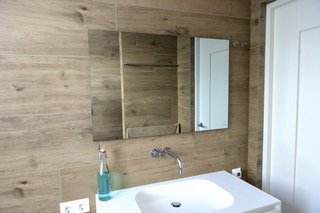
Infrared is suitable for whole-house heating
Infrared heating can provide whole-house heating. I wrote an article on whole-house infrared heating where I try to answer all your questions about whole-house infrared heating. This article also includes my friend’s experience, energy use, and the costs of heating an apartment with nothing but infrared. You can find it here.
4. Infrared heaters are very durable
Infrared heaters last for many years. Quartz heaters will last for 5000 hours. Ceramic and carbon heaters can run for 10.000 hours, and infrared heating panels can last as long as 100.000 hours.
Infrared heaters last for a very long time. Quartz heaters are the least durable infrared heaters, but can still last about 5000 hours. That means they can run over 200 days non-stop. So, when you run your quartz heater for, let’s say 6 hours a day, it will last for about 27 months.
Ceramic and carbon heaters are known to last for 10.000 hours. So, if you run a ceramic or carbon infrared heater for 6 hours a day, it will last about 4.5 years.
Infrared heating panels however far surpass this durability and can last for 100.000 hours. That means you can run it 24/7 for about 11 years!
For more in-depth information about their durability, you can read my article here: Infrared heaters life expectancy: which is the most durable?
5. Infrared heating is not affected by drafts
Because infrared heaters do not warm up the air, their way of heating is not affected by drafts. With regular warm air heating, opening a window or door leads to significant heat loss. When you open a window or door, warm air flows out and cold air comes in. This can lead to significant temperature drops and results in much less thermal comfort.
When using infrared, opening a door or window is much less disastrous. Of course, indoor air is still exchanged with outdoor air, and therefore cools down. However, infrared heaters heat you and the objects in the room directly, and not the air itself. Therefore, you will be heated just as effectively as before you opened a window. It is best described as sitting outside in the sun when a cold breeze passes by.
6. Infrared heating results in better air quality
The quality of the air we breathe is very important for our well-being. Regular fuel-based heaters can worsen your air by emitting harmful particles and gasses and creating air movement. Electric infrared heaters help maintain healthy indoor air.
The following table shows all the air quality benefits infrared heating has over conventional fuel-based heating.
| Fuel-based heaters | Electrical infrared heaters |
| Are a carbon monoxide hazard (CO) | Never emit CO |
| Stir up dust and particles (PM2.5) | Do not stir up the air |
| Emit pollutants (particles, soot, smoke) | Do not emit any harmful particles |
| Dries out the air | Does not dry the air |
Indoor air quality is a very important health topic that I am passionate about. You can read all about indoor air quality on this website. I encourage you to start here: The complete guide to indoor air quality for your home.
No carbon monoxide (CO)
Carbon monoxide is a colorless odorless gas that causes about 50.000 CO poisoning cases each year in the US. CO poisoning can be lethal, and about 430 people die from it each year in the US according to the center for disease control.
However, CO is only emitted when burning fuel. Electric infrared heaters do not burn any fuel and therefore pose no carbon monoxide hazard. Some infrared heaters, however, run on gas, making them a potential CO hazard. Normally, however, gas-based infrared heaters are only used as outdoor space heaters. This makes their potential CO hazard negligible since the CO cannot build up and reach dangerous levels outdoors.
If you want to read more about CO, I recommend reading my article: Do infrared heaters emit carbon monoxide? With CO prevention tips
No particles, soot, and smoke emissions
Since electric infrared heaters do not burn fuel, there are no emissions of particles such as smoke, soot, or tiny invisible particles called particulate matter. Particulate matter is harmful to our lungs and has some serious implications for our health.
Infrared heaters do not dry the air
Depending on your normal humidity levels you might benefit from either infrared heaters or conventional air heating (and drying) heaters.
Conventional heaters dry out the air by heating it up. If you have normal, comfortable, humidity levels (meaning a relative humidity of around 50%), this can result in too dry air. Dry air results in complaints and discomfort such as dry eyes, dry throat, dehydration, and respiratory issues. If you have high humidity levels, however, conventional dry-air heating might be beneficial.
Infrared heaters, since they do not heat the air, won’t dry out the air. If you already have good relative humidity levels, this is perfect. Still, I personally prefer using infrared panels for heating and regulating our (usually too high) humidity levels with a dehumidifier. In this way, I have more control over both temperature and humidity levels.
For more information about why infrared heaters do not dry the air, I recommend my article: This is why infrared heaters don’t dry the air.
Not drying the air is much better for your furniture too. You can read all about infrared heaters and furniture in my article: Can infrared heaters damage furniture?
My personal experience with infrared and dry air
During winter, since we have very poor insulation, I supplement my infrared heating panels with a regular electric space heater. And I have to say I can really feel the difference in air dryness. After a while, when we turn the electric heaters high in order to heat the room, the air becomes very dry. We both start to experience several symptoms including headaches and thirstiness.
Therefore, we turn off the air-heating space heater whenever possible and rely on our infrared panels. Fresher, more humid, and cooler air definitely feels much more comfortable than the dry warm air coming from electric heaters.
I really love the more natural, fresher, and cooler indoor air we can enjoy while being warm in front of our infrared panels.
Infrared heating does not create airflow
Conventional heaters make the air move because of rising warm air. Air movement results in dust and other harmful particles that were stuck to surfaces becoming airborne. Because of this, they are much more easily inhaled.
Since infrared heating does not heat the air, it does not create air movement. Therefore, switching to infrared heaters can help lower the number of particles in your air.
My personal experience with heating and indoor air quality
As I’m writing this, I am sitting close to my 700W infrared heating panel. However, since it is freezing outside and my home is not yet fully insulated, I also turned on our oil heater. I have to say that I clearly notice the worsening air quality due to our oil heater. Now the air faintly smells of oil and fire. Normally, when only running our infrared heaters, the air is cool and fresh.
I just took a walk outside and feel fresh and awake from the lovely sunny winter day. However, sitting behind my desk, I immediately start to feel a little sleepy and a slight headache is starting. My girlfriend has similar complaints and we decide to turn the oil heater a little lower and air out the house. Luckily, airing out the house, although significantly lowering the room temperature, did freshen up the air.
Since infrared heaters do not heat the air, the air does not dry out. Therefore, the air humidity is at a more constant and natural level, which is more comfortable. With conventional heating, turning on the heat dries out the air, especially during winter. Dry air can result in symptoms like dehydration, sore throat, dry eyes, and respiratory issues.
7. Infrared heating is better for allergies
Infrared heating is beneficial for allergy sufferers. Since, as described above, infrared heaters do not increase airflow, no dust or allergens are being circulated around the room. On top of that, infrared heaters result in more stable humidity levels by not drying the air. Therefore, allergy sufferers likely experience fewer issues and poor air quality symptoms such as fatigue, a sore throat, and dry eyes are reduced.
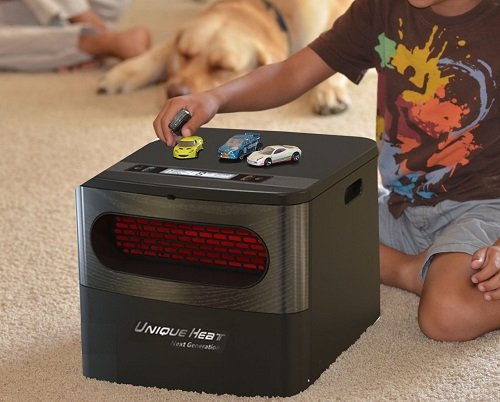
8. Infrared heaters are very safe
Other than emitting harmful compounds, fuel-based heaters also pose other hazards such as a fire hazard or a gas leak. Electrical infrared heaters don’t have these issues and are very safe.
Infrared heating panels are especially safe as they do not get very hot (at maximum 212 degrees Fahrenheit/100 degrees Celsius), and can therefore be touched briefly for about 2 seconds without any danger. If something like paper would touch an infrared panel for a period of time, it will not start to burn.
Other types of infrared heaters do become very hot internally. However, they always come with several safety measures:
- protective casing
- tip-over protection
- over-heating protection
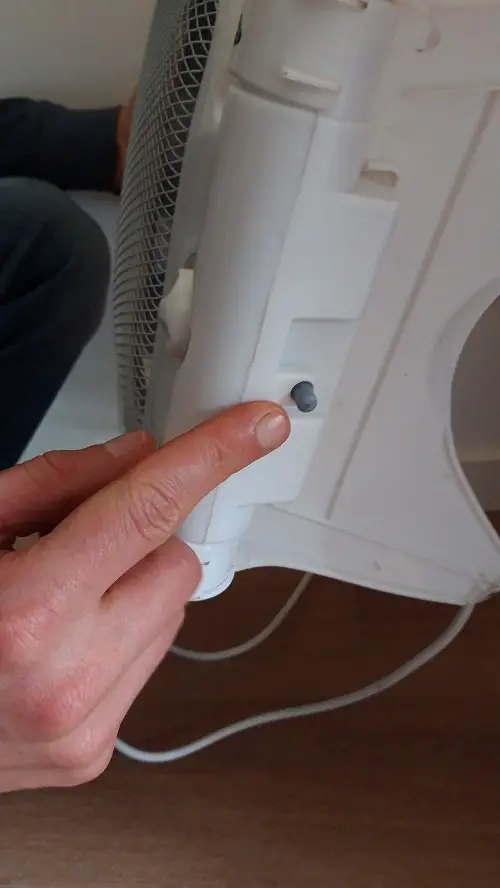
9. Infrared heating prevents condensation
Infrared heating prevents condensation and dampness. It heats the walls and furniture and prevents moisture condensation on them. Normally, heaters heat up the air, and since the walls and furniture are still relatively cold, moisture can condense onto them.
In this way, infrared prevents mold from forming due to lower dampness. When the heated air (which contains water) comes into contact with your relatively cold walls, windows, or furniture, water droplets form on them. This will never happen with infrared heating as the walls and furniture are heated first.
If you (suspect you) have issues with mold growth, you might want to look into monitoring your air quality. I recommend reading my article: Do air quality monitors detect mold?
10. Infrared heaters work almost instantly
Infrared heaters heat us directly and warm up very quickly. It takes two minutes for an infrared heater to get to its maximum heating capacity. therefore, they are especially suitable for areas that do not require constant heating. A bathroom, for example, can make great use of infrared heating panels since you will not need to heat it all day. Panels are especially great for the bathroom as they can be ordered as a mirror.
Conventional heaters produce warm air instead of warm radiation. Since warm air rises, conventional heaters practically start their heating at the ceiling. It takes a while, depending on the size and height of the room, before you feel the warmth of a conventional heating system.
11. Installation is easy
There are a few different types of infrared heaters, but all of them are very easy to install. Portable electric infrared heaters only require a place to stand and a socket for the power plug.
Infrared heating panels are also very easy to install. Although they need to be mounted to a wall or ceiling, they come with a simple mounting frame that is installed with just a few screws. Other than that, they require a wall outlet nearby to plug in the power plug.
Infrared heating panels can be mounted to cover the areas that require heating without taking up any floor space.
However, there are a few safety precautions that are required. Primarily keeping some space around the heater. This is especially important when you want to keep the heater on during the night. You can read all about infrared heaters’ safety in my article: Are infrared heaters safe to leave on overnight?
12. No maintenance is required for infrared panels
While portable infrared heaters and outdoor patio heaters require some maintenance, infrared heating panels do not. Simple maintenance like dusting and checking the interior for dirt or other obstructions is recommended for most infrared heaters.
Infrared heating panels however are just plain thin panels that do not require any maintenance. From my experience with infrared panels, the only thing that I sometimes do is remove threads from clothes that have stuck to the rough surface of the panel. That’s all!
Here’s my infrared heating review article
I love our two infrared heating panels and greatly prefer them to other heaters I have used before. If you would like to know my first impressions of the panels, my first-hand user experience, and why I think it is the future of heating, you can find my article here: Infrared heating panel review: my personal experience.
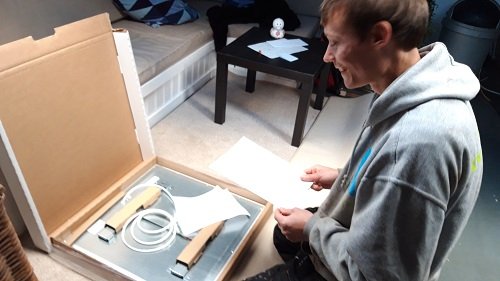
The cons of infrared heaters
1. Most infrared heaters run on electricity, which is expensive
Most infrared heaters run on electricity. This is one of the most expensive forms of energy. Therefore, even while infrared heaters are very efficient, the running costs are relatively high. Especially when infrared heaters are used as primary heating.
One kilowatt-hour of electricity costs approximately $0.15. That means:
Running a typical 1500 W infrared heater for 8 hours costs $1.8.
In comparison, getting the same amount of heat with a gas-fired (non-infrared) heater, required about 2500 W of gas. However, gas only costs about $0.061 per kiloWatt-hour. So, running a gas-fired heater for 8 hours costs approximately $1.2. (update 7-11-2022: gas prices are at an all-time high, so electric heating becomes more and more preferable)
I wrote an article going into depth about the costs of purchasing and using infrared heaters. I highly recommend reading it before deciding whether infrared heating is for you. You can find it here: Are infrared heaters worth it?
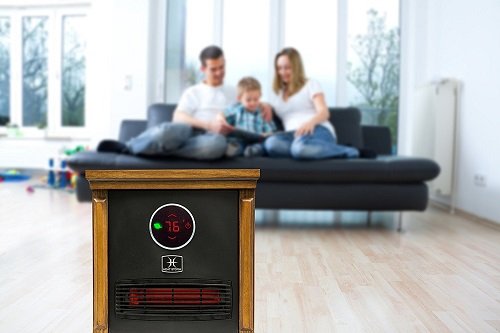
2. With infrared, the air can stay relatively cold
Since infrared heaters do not heat the air, the air in the room can stay relatively cold. However, if you have sufficient wattage installed to heat the room, it will eventually get comfortable. Just like any heater, at first, it will only be comfortable close to the heater. You can install a thermostat in order to control the warmth of the room. It will take some getting used to. Since the air in the room will warm up relatively slowly while close to the heater you will feel warm in a matter of seconds.
Good insulation will help speed up the heating of the room. Additionally, if you don’t have good insulation, you can consider using infrared as supplemental heating to a central heating system. In this way, you can relatively cheaply heat the room to a temperature of 60 to 65 Fahrenheit (15 to 18 degrees Celsius), and be comfortable sitting close to your infrared heater.
When I first moved into my current home, we had very little insulation and a lot of draft inside. We decided to purchase infrared heating panels for heating. In my article, I take you along my journey and experience with infrared heating panels. You can find it here.
3. Focused heating can leave others cold
Infrared heaters only heat people and objects within range of their warming rays. Therefore, when you are not directly bathing in infrared, you do not feel much warmth. This effect is mitigated by making sure your house is well-insulated and there are no drafts. In this way, the infrared rays will heat all objects, including the walls, inside the room. Objects will start to emit infrared themselves because all warm objects emit infrared. So, eventually, the whole room will get comfortable.
4. Infrared heaters must not be obstructed
For infrared heaters to work most effectively, they need to be able to send their warming rays throughout the room. Therefore, if objects such as furniture are obstructing the rays, the panels will be less effective. This means that, in practice, you need enough space around the heater. This can be tough, especially in small rooms.
Infrared heating panels, however, can be mounted to the ceiling or a wall. In this way, especially when mounted to the ceiling, there are no obstructions and they will perform at their best.
5. Infrared heaters cannot replace a boiler
Infrared heaters can only be used for heating people and objects. They cannot provide hot water for the tap and shower. Therefore, they cannot entirely replace a central heating system.
Most households have a central heating system based on gas. This system not only provides warm air through radiators but also ensures a boiler with hot water is available all the time.
Infrared heaters cannot provide hot water. They can only heat people and objects. Therefore, if you want to replace your room heating with infrared, you will need an additional heating system for hot water.
6. Gas-fired infrared heaters are not entirely safe
As with any gas-fired heater, infrared heaters that run on gas are not completely safe. They cannot be left unattended since a gas leak, although unlikely to happen, is very dangerous.
Luckily, most infrared heaters run on electricity and are very safe. Basically, only outdoor infrared patio heaters run on gas. If you want to read more about infrared heaters’ safety, I recommend reading my article: Infrared heaters safety (fire, radiation, safe practices).
7. Not drying the air can be a disadvantage
As I mentioned earlier when I talked about the effect of infrared heating on humidity levels, infrared heating does not dry the air. This is an advantage since it simply does what you want it to do, heat you and the house. However, some people live in a very humid climate and normally have humidity levels that exceed 60% relative humidity. If that is the case, and you are used to regular air-warming heaters, you might have come to rely on your heater drying the air.
In that case, you either might want to stick to air heaters, or you need an additional device to dry the air. A dehumidifier is specifically designed to remove moisture from the air. I personally prefer to use infrared for my heating and use a dehumidifier to create comfortable levels of humidity. In this way, I have complete control over the air to create the most comfortable place to live.
For more information about humidity and infrared heating disadvantages, I recommend reading my article here.



1 thought on “Infrared heating pros and cons (and why I love it)”
Comments are closed.